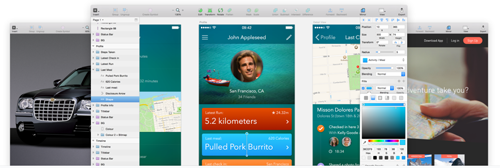By Roscoe Tsalacopoulos, Web/UI Designer,
Envato
First impressions are everything. For any business today with an online presence, your website is often that first impression. The kicker? You have mere milliseconds to catch someone's attention. A study by the Missouri University of Science and Technology suggested that people create a first impression about a website in .2 seconds or less and it takes 2.6 seconds for a user to decide whether they are going to stick around on that site.
In other words, the visual appeal of a website is crucial to its success. But what if you had just over a week to design it? My team and I recently rose to the challenge and conquered this feat. Here's how we did it:
Work, work, work, work
It's important to make sure all the stakeholders are aligned on the project before any design and development takes place. To kick things off, it's important to hold a strategy and brainstorm workshop with a larger group. This can include executive, developers and anyone else in the organization that might have a finger in the pot. This allows everyone an opportunity to voice ideas and concerns while understanding the core problem you're trying to solve.
This also helps you ensure you spend your time making the right things for the right reasons. If it isn't actually going to solve a problem, you want to know before you make it, not after.
The next step is to have a smaller design workshop with the user interface (UI) designer, the product owner and copywriter to generate ideas around personas, an information architecture, a bubble chart, user flows, rough wireframes, etc.
Another great tip to help fast iterations is working in close proximity. This way you can brainstorm and throw out ideas to the people around you. Nothing beats sitting next to the product owner so you can work out solutions on the fly.
Don't reinvent the wheel
It's important to have good processes in place to maximize the number of reusable design assets. One design tool of choice is Sketch and as a result, you can have a UI Kit with everything from typography and colors to individual elements, such as buttons, icons and tags at your disposal.

This modular, repeatable way of working streamlines into the visual design process, allows designers to think about the big picture, rather than what color a button should be. This type of 'design system' can also help with quality control, and maintaining branding and UI consistency.
Homepage, sweet homepage
Based on our brainstorms and workshops, we knew we wanted our site's homepage to function as a place of inspiration that people will keep coming back to, so we conceptualized the homepage to progress from broad appeal at the top, to more specific topics for exploration further down.
Having said that, studies show that homepages aren't as important as they used to be, because online behavior has changed and users arrive at websites through various links, like social media, newsletter, search engines, etc. While that may be the case, it's important to figure out how and where most viewers are arriving to your site. That way you can modify your website as needed and optimize it so that's most relevant to your audience. If you notice a majority of traffic comes through social media posts on whitepapers and blog posts, make sure your team creates content that will continue to drive this type of content in order to appeal to your audience as well as attract new viewers.
What's next?
Upon reflection, a tight deadline on a project can help, as it forces team members to focus on the important stuff and have a clear plan. My team's website was successful, but by no means is it finished at the end of the eight days. We still had some features and functionality to implement (newsletter subscription, search functionality and tags), as well as focus on the quality of the content that was being published to the site.
Websites are always a work in progress - with new content, the availability of new functionality and features - you should always be making updates to your website to ensure it's attracting the attention of your audience. About the Author
Roscoe Tsalacopoulos is a Web/UI Designer for Envato, the world's leading digital asset marketplace.
